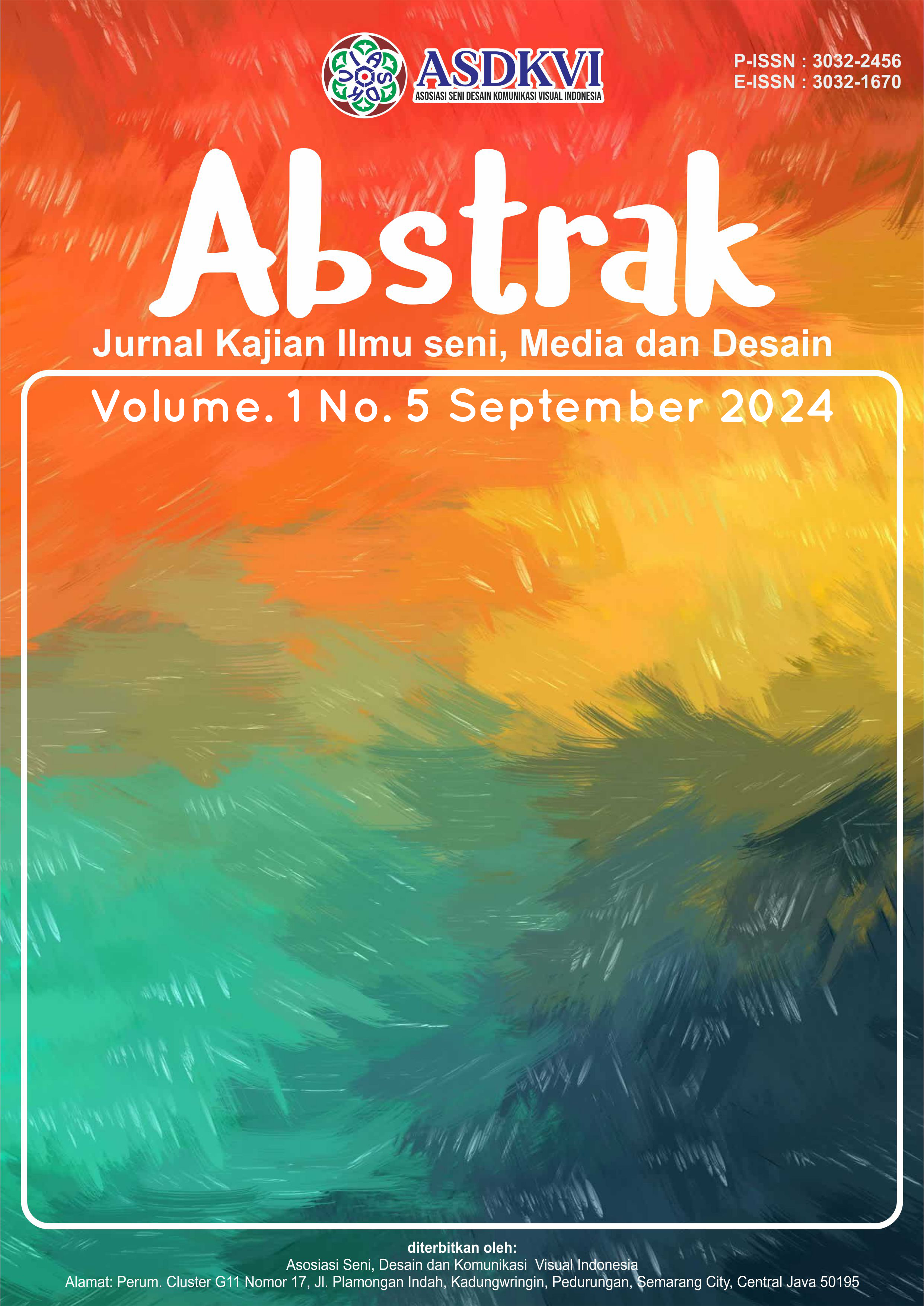Penerapan Konsep Desain Interior dan Dynamic Lighting Untuk Terapi Circadian Rhythm Sleep Disorders
DOI:
https://doi.org/10.62383/abstrak.v1i5.296Keywords:
Dynamic Lightings, Interior Design, Sleep Disorder, Circadian RhythmAbstract
Sleep disorders are a prevalent issue with significant implications for human well-being. This research focuses on studying interior design concept and dynamic lighting tailored for individuals with sleep disorders aiming to create a supportive environment through human circadian rhythm. Through literature analysis and experiment-based methods, key design factors including lighting and human circadian rhythm system were identified. The outcome is a comprehensive interior design concept for theraputic purpose that promotes comfortable sleep and relaxation by synchronizing lighting design responding to the behavioural changes following 24-hour cycle. This study also explores timed interior lighting scenario for effective sleep therapy processes, aiming to enhance the quality of life for individuals with sleep disorders.
References
Banks, S., & Dinges, D. F. (2007). Behavioral and Physiological Consequences of Sleep Restriction REVIEW ARTICLES. In Journal of Clinical Sleep Medicine (Vol. 3, Issue 5).
Berson, D. M., Dunn, F. A., & Takao, M. (2002). Phototransduction by Retinal Ganglion Cells That Set the Circadian Clock. Science, 295, 1070–1073. https://api.semanticscholar.org/CorpusID:30745140
Blume, C., Garbazza, C., & Spitschan, M. (2019). Effects of light on human circadian rhythms, sleep and mood. In Somnologie (Vol. 23, Issue 3, pp. 147–156). Dr. Dietrich Steinkopff Verlag GmbH and Co. KG. https://doi.org/10.1007/s11818-019-00215-x
BPS. (2022). Badan Statistik Kesehatan 2022.
Clark, E., Bd+c, A. P., Chatto, C. F., & Aia, A. (2014). Biophilic Design Strategies to generate wellness and productivity. www.aia.org/Designhealth
Dalke, H., Littlefair, P. J., & Loe, D. (2004). Lighting And Colour For Hospital Design. https://api.semanticscholar.org/CorpusID:70382067
Ferrante, T., & Villani, T. (2022). Pre-Occupancy Evaluation in Hospital Rooms for Efficient Use of Natural Light—Improved Proposals. Buildings. https://api.semanticscholar.org/CorpusID:254404683
Figueiro, M. G. (2017). Disruption of Circadian Rhythms by Light During Day and Night. Current Sleep Medicine Reports, 3, 76–84. https://api.semanticscholar.org/CorpusID:4768432
Frumkin, H. (2001). Beyond toxicity: human health and the natural environment. American Journal of Preventive Medicine, 20 3, 234–240. https://api.semanticscholar.org/CorpusID:1121840
Gashoot, M. M. (2022). Holistic Healing Framework: Impact of the Physical Surrounding Design on Patient Healing and Wellbeing. Art and Design Review, 10(01), 18–28. https://doi.org/10.4236/adr.2022.101002
Jacobs, K. W., & Suess, J. F. (1975). Effects of Four Psychological Primary Colors on Anxiety State. Perceptual and Motor Skills, 41, 207–210. https://api.semanticscholar.org/CorpusID:45099237
Karlin, B. E., & Zeiss, R. A. (2006). Best practices: environmental and therapeutic issues in psychiatric hospital design: toward best practices. Psychiatric Services, 57 10, 1376–1378. https://api.semanticscholar.org/CorpusID:18071262
Kementrian Kesehatan RI. (2010). PEDOMAN TEKNIS FASILITAS RUMAH SAKIT KELAS B.
Liddicoat, S. (2019). Designing a supportive emergency department environment for people with self harm and suicidal ideation: A scoping review. Australasian Emergency Care, 22(3), 139–148. https://doi.org/https://doi.org/10.1016/j.auec.2019.04.006
Luh Emilia, N., Putu Angelina, N., & Keperawatan STIKes Bala Keselamatan Palu, P. (2023). Penerapan Terapi Guided Imagery untuk Meningkatkan Kualitas Tidur Lansia : Studi Kasus Application of Guided Imagery Therapy to Improve Sleep Quality of the Elderly: A Case Study. In An Idea Health Journal ISSN (Vol. 3, Issue 03).
Mahnke, F. H., & Hardcover. (1996). Color, Environmental and Human Response. https://api.semanticscholar.org/CorpusID:141340656
Malkin, J. (1992). Hospital Interior Architecture: Creating Healing Environments for Special Patient Populations. https://api.semanticscholar.org/CorpusID:69040445
Mignot, E. (2008). Why we sleep: The temporal organization of recovery. In PLoS Biology (Vol. 6, Issue 4, pp. 661–669). https://doi.org/10.1371/journal.pbio.0060106
Morgenthaler, It., Lee-Chiong, T., Alessi, C., & Leah Friedman. (2007). Practice Parameters for the Clinical Evaluation and Treatment of Circadian. Standards of Practice Committee of the American Academy of Sleep Medicine. https://doi.org/10.1093/sleep/30.11.1445
Perrin, F., Peigneux, P., Fuchs, S., Phane Verhaeghe, S., Laureys, S., Middleton, B., Degueldre, C., Fiore, G. Del, Vandewalle, G., Balteau, E., Poirrier, R., Moreau, V., Luxen, A., Maquet, P., & Dijk, D.-J. (2004). Nonvisual Responses to Light Exposure in the Human Brain during the Circadian Night. Current Biology, 14, 1842–1846. https://doi.org/10.1016/j
Reid, K. J., & Burgess, H. J. (2005). Circadian Rhythm Sleep Disorders. Primary Care: Clinics in Office Practice, 32(2), 449–473. https://doi.org/https://doi.org/10.1016/j.pop.2005.02.002
Shepley, M. M., Pasha, S., Ferguson Jamie Huffcut Guy Kiyokawa Joe Martere Terri Meyerhoeffer Brenda McDermott, P. C., Becker, F., Dellinger, B., Malone, E., & Sine, D. (2013). Design Research and Behavioral Health Facilities.
Shepley, M. M., Peditto, K., A Sachs, N., Pham, Y., Barankevich, R., Crouppen, G., & Karyn, D. (2022). Staff and resident perceptions of mental and behavioural health environments. Building Research & Information, 50(1–2), 89–104. https://doi.org/10.1080/09613218.2021.1963653
Shepley, M. M., Watson, A., Pitts, F., Garrity, A., Spelman, E., Kelkar, J., & Fronsman, A. (2016). Mental and behavioral health environments: critical considerations for facility design. General Hospital Psychiatry, 42, 15–21. https://doi.org/https://doi.org/10.1016/j.genhosppsych.2016.06.003
Simarmata, A. (2023). The Creativity in the Design of Hospital Inpatient Rooms with Biophilic Criteria. E3S Web Conf., 426, 1087. https://doi.org/10.1051/e3sconf/202342601087
Tofle, R. Brent. (2004). Color in healthcare environments. Coalition for Health Environments Research.
Ulrich, R. S., Bogren, L., & Lundin, S. (2012). Towards a design theory for reducing aggression in psychiatric facilities. https://api.semanticscholar.org/CorpusID:1004848
Wahl, S., Engelhardt, M., Schaupp, P., Lappe, C., & Ivanov, I. V. (2019). The inner clock—Blue light sets the human rhythm. In Journal of Biophotonics (Vol. 12, Issue 12). Wiley-VCH Verlag. https://doi.org/10.1002/jbio.201900102
Downloads
Published
How to Cite
Issue
Section
License
Copyright (c) 2024 Abstrak : Jurnal Kajian Ilmu seni, Media dan Desain

This work is licensed under a Creative Commons Attribution-ShareAlike 4.0 International License.





